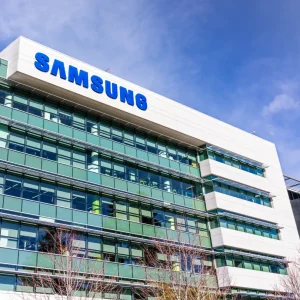
So much has changed in the ecommerce space since it first arrived back in 1994. Buying and selling online seemed a bit of a gamble at first, but it has played out to become as pervasive a movement as the industrial revolution. Businesses have scaled internationally faster than ever before, and digital businesses now dominate, selling everything from hotel bookings to groceries.

The UK is a global leader when it comes to online shopping – consumers are primed and the number of E&M-commerce merchants is increasing every year. Of course the competition for the new wave of digital consumers is growing too.
The good news is that in parallel of course the technology landscape has also changed substantially since 1994, a shift that has disrupted the legacy incumbents and seen new entrants such as Uber and Airbnb explode into being, some already having become verbs despite their relatively recent establishment. Scaling an E/M-commerce platform and procuring the tools needed to offer a rich online experience has never been easier. So, what do emerging and scaling businesses need to focus on to secure their slice of the pie?
Create a great experience
Experience is everything. In a world where price comparison is easy, the customer’s experience has become the key to differentiation. To service a generation with the world at its fingertips, convenience is mandatory, ruthless impatience is inevitable. Fast load times and seamless navigation are critical.
Friction may not just compromise the first time purchase but sabotage the entire lifetime value of a customer – they may never come back. Checking out needs to be simple, intuitive with as few clicks and required information as possible. Technology partners can help make the transition from intent to transaction, from discovery to purchase quick, secure and easy but the journey doesn’t just stop there.
Digital interaction and engagement underpins much of people’s everyday lives and in all sorts of different but connected mediums. Be it the notification of a sale or the ability to contextually buy straight from the messaging apps where people are interacting socially, arranging their tickets and taxis to an upcoming event or restaurant, purchasing doesn’t just happen in the online store – it could and should be able to take place in the context of wherever people are spending their time.
Businesses who listen to their consumers, understand their motivations and align their buying experiences with what their customers want, are and will continue to be the winners in the e/m commerce world.
Getting paid is not an afterthought
Emerging retailers will often focus their time and money on building aesthetically appealing websites, then worry about the e-commerce component as an afterthought.
Whilst aesthetic appeal is important, your customer is ultimately there to buy. The site, app, or channel needs to load quickly, be easy to navigate, display relevant curated content, clearly and elegantly in whatever medium your customer happens to be shopping in – whether researching on desktop or buying in-app. The ever-discerning consumer needs to be able to navigate your site easily and find their desired items in just seconds.
Offer recognised forms of payments
Imagine giving customers the option to buy shoes or clothes only in certain sizes – you would limit your market tremendously. The same goes for payments – if you only give people one or two payment method options and they don’t feel comfortable using those, they will most likely leave your website or app, maybe forever.
Simple but a fundamental. It serves to ensure your website can accept credit and debit cards, PayPal, and other forms of payments that are recognised by your consumers. Consumers trust retailers when they see something they are familiar with. People may well abandon their basket at checkout in favour of a more familiar well-known checkout mark if they don’t feel 100% certain that their purchase will be safe.
Do your research
A recent study found that 39% of UK consumers would allow companies to access their personal data via smart devices for a better experience or financial reward. Using data to understand the where, when, and how of your customers’ socialising and spending habits could lead to incremental new revenue streams. For example, Uber recognised that many shared trips were planned in Facebook Messenger. This was the seed that grew into its in-message ride ordering system, with payments powered by Braintree. Eventbrite realised that people buying tickets for festivals would also be spending money at the event. This opened up a brand new offer, tailored to their customers, to use RFID bracelets to pay at particular festivals.
Think globally
Online shopping is borderless. As soon as you open your digital doors, you can be catering to shoppers anywhere across the world. Ensuring you offer multiple currencies and acknowledging behavioural traits or payment customs in different markets is critical.
Working with partners that are truly global in nature and have both the technology and international network to help support your expansion will become increasingly critical as well. By implementing and partnering with PayPal, for example, businesses are given immediate access to over 210 million active consumers who are hungry for safe fast and secure e-commerce and m-commerce experiences worldwide.
Be transparent
Retailers can score low on the customer experience scale if they are bad at communicating things like pricing and shipping costs. Many customers will cancel a transaction once they learn the true cost to purchase a product, including fees such as taxes, shipping, and customs duties. If customers know their overall cost up front, they are more likely to buy rather than become frustrated after going through the checkout process only to find unforeseen additional charges at the end. They may start the process again or more likely leave your website, abandoning the basket for good.
The next wave of digital transformation is estimated to bring £2.25 trillion to the retail industry over the next decade. The online pie is undoubtedly growing and presenting opportunity for both the incumbent players as well as the new ones. Whilst technology has levelled the playing field, both disruptors and industry incumbents need to move fast to capitalise. Agile businesses, ready and willing to build new experiences that align with their customers’ needs will be the winners over the next five years.






